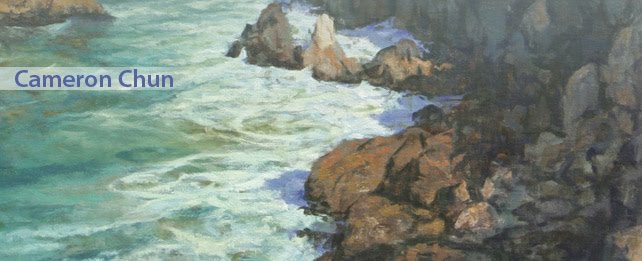This painting is from Monday night's long pose of Issac. If you know what I look like, let me assure you that this is not a self portrait! This is 2 hours worth of work. I don't always have the same approach to painting from the model, however for this two hour pose I wanted to try a slightly different process than my usual ala prima methods.
In preparation to painting, I gessoed both sides of a sheet of watercolor paper, tinted one side with a light blue color and taped it down to a board. Using a blue color pencil I quickly drew in an outline of the model. Next, I used white gesso to paint the overall large shapes that I saw illuminated by the light source. This is a quick way of creating a rough equivalent of an under painting and was done within the first 20 minutes of the pose.

Next, I put in the background with thinned out washes of paint establish some shapes and color. A good rule to follow is working from "lean to fat", or thin layers of paint with turpintine that will dry faster under the thicker paint which is sometimes mixed with linseed oil. Only after I have blocked in the majority of values and color of the background will I start to apply paint to the main subject or model. Since color is relative to it's surroundings, this gives me a better chance to pick the right colors to mix and paint in the figure.
Now the really fun part of painting begins for me. This is the part where I do my best to match the values and colors I see. I identify the smaller shapes as well as think about anatomy when it applies. Once I'm happy with the initial shapes of color and value, I'll work on edges and blending. The face, for example, has a nice crisp edge to define the profile contrasted by the softer edges in the middle of the head. This where the color of the blue tinted gesso comes into play and can work to your advantage or not. Many times a painter will let some of the color from the under painting peek through. You see it a lot in old master paintings. I randomly picked this blue and had no idea what the colors in the environment would look like before I started. In this case, it did not necessarily help me out all that much because the blue did not exist anywhere in the pose. That means if I want to accurately capture what I'm seeing I will have to paint over all of the blue tint. However, I did find a way to use some of the tint. If you look at the neck area in shadow, I thinned out my paint mixture so that it was somewhat translucent to let the blue tint come through. Your eyes optically mix it with the thin layer of paint to make a pale green color.







No comments:
Post a Comment